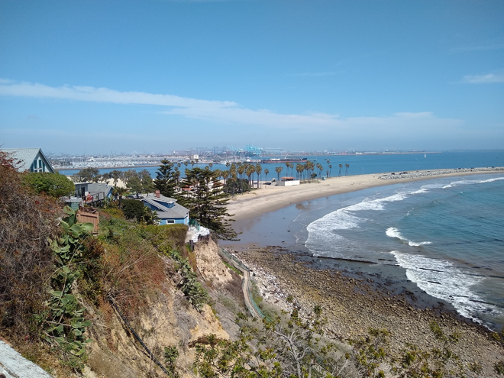Written by Mina Tocalini
Introduction
Adobe’s Photoshop Neural Filters utilize artificial intelligence to retouch images in seconds, but how do they work? As the name suggests, Adobe has developed an artificial neural network that can identify patterns in the images and then use that information to make the edits.
The new features are still in the beta stage, but currently offer the following edits: Smart Portrait, Makeup Transfer, Depth-Aware Haze, Colorize, and Super Zoom. Additional features that have yet to be released (and are subject to change) include Face Cleanup, Photo to Sketch, Sketch to Portrait, Pencil Artwork, and Face to Caricature.
It goes without saying that Photoshop neural filters are innovating the software and workflow of Adobe users. Yet, most features will likely be thrown aside as cheesy effects to intrigue new users. It’s hard to envision the Face to Caricature feature having a long-lasting use among professionals, but it could be the first step into something bigger.
The feature that this review will focus on is Super Zoom. A CNET press release boasts that the feature could “blow up a 12-megapixel smartphone photo into a much larger 48-megapixel shot.” In that case, anybody could take a great resolution image without an expensive camera. This also means that one could repeatedly zoom into a picture to get amazing high-resolution images, but the question remains: how effective is Photoshop Super Zoom?
What Is Super Zoom?
Super Zoom, also known as the “enhance” feature, can provide a useful function for all users. Super Zoom can make photography more accessible to those without the means of buying an expensive camera. Professionals can make quick adjustments to images that are beyond the stage of reshoots. All this and more can be possible, if the feature works as expected.
In Adobe’s January press release, it explained that the Super Zoom filter “adds details to compensate for the loss of resolution,” but “doesn’t actually increase the resolution of the image.” In Photoshop’s Camera Raw editor, the feature can enhance the image with “2x the linear resolution,” meaning the final image will have two times the width and height.
Super Zoom in Action
After reading a PetaPixel review and another from CNET on the Super Zoom feature, I was very impressed. Image enhancement has gone from movie fiction to being accessible in the palms one’s hands. After using Super Zoom, I was mildly interested in it. The main problem is that the added details are based on a low-resolution image and are not as accurate as one might hope they would be.
Figure 1: Original photo taken on a Nikon D3500 with a 24.2mp sensor. Source: Author.
Figure 2: Original photo taken on a Moto G7 with a 12mp sensor. Source: Author.
To test Super Zoom, I took the same picture of a beach twice: first with my Nikon D3500, which has a 24.2mp sensor, and then with my phone, a Moto G7 with a 12mp sensor. As one might expect, my Nikon takes a higher resolution image than my Moto G7 because larger sensors produce a higher pixel count. (You can read more about camera sensors here.) By comparing the effects of Super Zoom on each image and then comparing them to each other, we can reveal the quality of the feature.
My first test was to compare the Super Zoom feature available under the Photoshop Camera Raw Editor. In both scenarios the total pixels increased like promised. For the Nikon picture, the pixel count went from 6,000 x 4,000 to 12,000 x 8,000 pixels. For the Moto G7 picture, it went from 4,096 x 3,072 to 8,192 x 61,444 pixels. So, one might assume that the enhanced Moto G7 picture (8,192 x 61,444) would be better than the original Nikon picture (6,000 x 4,000). However, when zooming in via my Mac’s preview app, the Nikon image was still better.
Figure 3: Original Nikon image. Source: Author.
Figure 4: Enhanced Moto G7 image. Source: Author.
Why? It’s simple. Even though Photoshop Super Zoom is adding new pixels via neural networks, the AI process cannot compete with a camera sensor used in real time. That being said, it is also important to note that this feature and all Photoshop Neural Filters are in a beta stage. So, the image comparison above could change drastically in the future, but in order to do so, the algorithm will need to be improved as more patterns are revealed. Below, I used the Super Zoom tool in the Neural Filters editor on my Moto G7 pictures. Here, you can’t actually enhance the entire image, but can instead select a portion of it to enhance.
Figure 5: Super Zoom applied to Moto G7 images. Source: Author.
You can see the same effect as before happening as I zoom in closer to the sand, shown in the photos above. It almost looks like a high-level posterization of the original image or like one of the artistic brush filters from the Photoshop Filter Gallery. Either way, I would hardly call this a “Super Zoomed” image from the original. If this feature does not improve significantly after the beta stage, then I am afraid it would fall into the same fate as the others: a cheesy effect. Effects can definitely be used in original ways, but because they rely on the same algorithm for each image, they become predictable and identifiable. AI image enhancement has a high bar to reach, but it’s not impossible. After all, even this is progress.
“Effects can definitely be used in original ways, but because they rely on the same algorithm for each image, they become predictable and identifiable. ”
Conclusion
In the end, did Photoshop Super Zoom “blow up a 12-megapixel smartphone photo into a much larger 48-megapixel shot?” Yes and no. The total pixel count did increase, but the quality of the image could not compete with that of a camera with a higher-quality sensor. Even though the “Super Zoomed” picture from my Moto G7 (12mp sensor) had more pixels than the original picture from my Nikon D3500 (24.2mp), the Nikon image still had clearer details. For now, a camera with a larger sensor is still a superior choice for photographers. Super Zoom can sharpen existing details, but it fails to create accurate missing pixel information.
Alternatives
Listed below are additional image enhancement or enlargement tools outside of the Adobe Creative Cloud that are available to use. Some are free while others may require a fee or one-time payment. Either way, Photoshop is not the only tool out there, nor will it necessarily be the first to become successful.
+ Resources
Baer, J. (2021, January 15). Neural filters: What Photoshop's powerful new AI tools can do. Retrieved March 23, 2021, from https://blog.adobe.com/en/publish/2021/01/15/neural-filters-what-photoshop-s-powerful-new-ai-tools-can-do.html#gs.wcjwfi
Clark, M. (2021, March 13). Adobe Photoshop's 'Super Resolution' made my jaw hit the floor. Retrieved March 22, 2021, from https://petapixel.com/2021/03/13/adobe-photoshops-super-resolution-made-my-jaw-hit-the-floor/
Hamel, J. (2015, December 02). 6 benefits of using cameras with larger sensors. Retrieved March 23, 2021, from https://digital-photography-school.com/6-benefits-of-using-cameras-with-larger-sensors/
IBM Cloud Education. (2020, August 17). What are neural networks? Retrieved March 23, 2021, from http://www.ibm.com/cloud/learn/neural-networks
Shankland, S. (2021, March 10). Photoshop super resolution will quadruple your photo's size. Retrieved March 23, 2021, from https://www.cnet.com/news/adobe-photoshop-uses-ai-to-quadruple-your-photos-size/
Use raw details and super resolution in adobe camera raw. (n.d.). Retrieved March 23, 2021, from https://helpx.adobe.com/camera-raw/using/enhance.html








